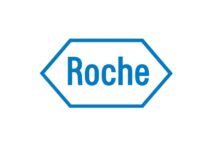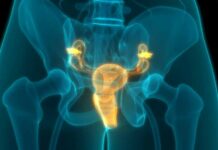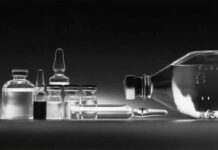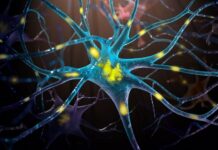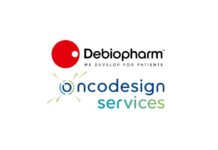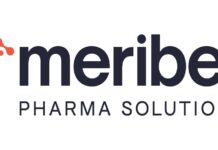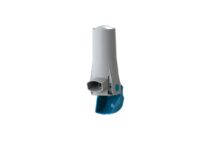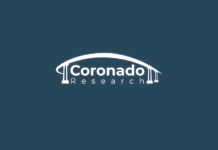While prescription medications are indispensable for managing various health conditions, their misuse can lead to a hazardous cycle known as prescription drug addiction. This issue poses significant risks to one’s overall health and wellness. Recognizing the signs is crucial to facilitate timely intervention and treatment.
Unpacking the Concept of Prescription Drug Addiction
Prescription drug addiction refers to the use of prescribed drugs in a way not intended by the healthcare provider. It could involve taking higher doses, using someone else’s medications, or taking the drug for reasons other than medical needs. This type of misuse can escalate to dependence, a complex disorder where the individual compulsively seeks the drug, even when aware of its harmful effects.
Behavioral Indicators of Misuse
According to the rehab services, one of the most telling signs of potential misuse involves changes in behavior. The person might show decreased interest in activities they previously enjoyed. There might be drastic shifts in their daily routines, energy levels, or sleeping patterns. Other possible changes could include decreased performance at work or school, social withdrawal, or secretive behavior around drug use.
Physical Signs to Look Out For
Alongside behavioral shifts, physical symptoms can also hint at potential addiction. These can range from weight fluctuations and alterations in physical appearance to more subtle signals like drowsiness, confusion, and slowed breathing. Other signs may include constant bouts of nausea or intense bouts of sweating when medication is not taken. More severe symptoms could include recurring health issues, unexplained injuries, or a noticeable decline in personal hygiene. Often, such changes might be accompanied by neglected self-care, visible signs of fatigue, or a general lack of vitality that might seem out of character for the individual.
Psychological Indicators
Prescription drug dependence can also manifest through psychological symptoms. An individual might exhibit mood swings, increased anxiety, or signs of depression. They may display unusual levels of energy, nervousness, or agitation. Increased sensitivity, rapid emotional changes, and even periods of unusual hyperactivity, hostility, or apathy are potential indicators.
The Slippery Slope to Addiction
While initial misuse might not necessarily lead to addiction, it significantly increases the risk. The transition often occurs when tolerance builds up, leading to the need for higher doses to achieve the same effect. Another key signal is experiencing withdrawal symptoms when trying to stop or reduce use. Such signs should not be ignored, as they require immediate professional attention.
Overcoming the Challenge
Battling prescription drug addictionis not a solo journey. It requires the collective effort of healthcare providers, loved ones, and, most importantly, the individual. By recognizing the signs early on, it is possible to intervene and get appropriate help. You can begin your journey to recovery ina prescription drugs rehab center,potentially preventing the slide into dependence.
Understanding the Risks
While prescribed medications are indeed meant to alleviate health concerns, misuse can result in detrimental outcomes. These may include severe health complications, such as heart or liver damage, due to chronic overuse. Mental health conditions can also worsen or emerge, ranging from heightened anxiety to the potential development of other substance use disorders. It is critical to realize these risks and watch for signals of dependence.
Social Impact of Addiction
The impact of prescription drug addictionoften extends beyond the individual to their interpersonal relationships and social circle. This could manifest as frayed relationships, job loss, academic failures, or legal troubles. Often, the person misusing medications might withdraw from their social responsibilities, pushing away friends and loved ones in the process. Observing these social changes can provide additional context in assessing the situation.
Getting Past Denial
One of the challenges in detecting misuse is the person’s likely denial of the problem. It’s common for individuals to underestimate the severity of their situation, particularly in the early stages. They may offer persistent excuses for their behavior or become defensive when confronted. Understanding and acknowledging this denial is vital in beginning the journey toward recovery.
The Role of Family and Friends
The role of close relatives and friends in detecting potential misuse cannot be overstated. They are often the first to notice subtle changes in the individual’s behavior and physical health. Furthermore, they can provide support, encourage professional help, and maintain a caring, non-judgmental environment, which can be crucial for a person struggling with addiction.
Prescription Misuse Among Adolescents
Adolescents and young adults are particularly vulnerable to prescription misuse due to factors like peer pressure, stress, and a lack of awareness about the dangers. Parents, teachers, and caregivers should be especially alert to any changes in behavior or academic performance which could indicate misuse. Experts in addiction treatment at Bright Futures Treatment Centersuggest that early detection in this age group is critical to prevent potential long-term damage.
Online Resources and Support Groups
In the digital age, numerous resources are available to help detect and combat prescription medication misuse. Online platforms offer educational content, virtual counseling, and interactive support groups. These resources can be incredibly helpful in providing information, sharing experiences, and fostering a sense of community for those dealing with these challenges.
Professional Help and Therapies
In cases of suspected drugabuse, it’s essential to consult healthcare professionals who can provide a proper diagnosis and treatment plan. Therapies can range from medication-assisted treatment and counseling to more intensive interventions like residential treatment programs. It’s important to remember that seeking professional help is not a sign of weakness but a step towards recovery and wellness.
The Stigma Surrounding Prescription Medication Misuse
Unfortunately, a stigma is often attached to prescription drug addiction, which can create barriers to seeking help. Combating this stigma by fostering understanding and empathy toward those struggling is essential. Recognizing that abuse is a complex health issue and not a moral failing can encourage more people to seek help and reduce the harm associated with misuse.
Conclusion
Recognizing the signs of prescription drug addictionis the first step toward effective intervention. However, it is essential to remember that only healthcare professionals can diagnose adependence. If you observe any warning signs in yourself or others, seeking professional guidance is the safest and most effective course of action. Addressing the problem early can pave the way for a successful recovery and a healthier future.



